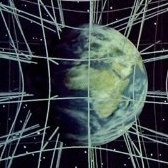Leaderboard
Popular Content
Showing content with the highest reputation on 01/09/21 in all areas
-
https://www.nytimes.com/2021/01/07/science/jellyfish-swimming-vortex.html contains cool gif at the top of a jellyfish swimming through laser sheet with tracer particles. https://royalsocietypublishing.org/doi/10.1098/rspb.2020.24943 points
-
2 points
-
Dear community! I've recently come across following intriguing thought experiment: Imagine a jar filled with water where infinitesimally small particles of iron dust are dissolved. The average particle diameter is small enough that they do not descend, therefore they are randomly distributed in the jar (high entropy). Now you take a magnet and hold it next to the jar - after some time has passed, the density of iron particles on the magnet side of the jar will be significantly higher than the density at the opposite side. Considering entropy, such a behavior should only be possible if the total amount of entropy increases or at least stays the same. However, this demixing/separation effect definitely has negative entropy, maybe not much but not zero. The only counteractive measure that would increase entropy I can think of is an increase in temperature. But if this is really the solution to this thought experiment, where would the energy necessary to heat up the system come from? Thanks a lot for every input1 point
-
https://www.bbc.com/future/article/20200803-the-solar-canals-revolutionising-indias-renewable-energy Clever solution1 point
-
By applying an external magnetic field to the system, haven't you introduced new potential energy terms boosting the system total energy? As the magnetic particles descend this new energy gradient to a new equilibrium position how is this energy going to be dissipated other than in the form of heat? As a practical example, you might compare and contrast the removal of particulates from eg coal-fired power station flue gas by electrostatic precipitators. The pretty efficient separation of gas and solids suggests an entropy decrease, but on the other hand, electricity is consumed, and that's going to end up releasing heat somewhere or other.1 point
-
Yes, because the term is ambiguous; as wiki says. A closed system is a physical system that does not allow transfer of matter in or out of the system, though, in different contexts, such as physics, chemistry or engineering, the transfer of energy is or is not allowed. Moving a magnet near a magnetic material involves a transfer of energy If I put a beaker of water on a magnetic stirrer, the water will get warm because work is done by the stir bar against the viscosity of the liquid.1 point
-
Not all all sure about either the question or the answer. Iron particles are not soluble in water. They may be suspended which is a different thing. Since there is no solvation, there is no heat of solution to replace when you de-suspend them. In fact the particles move to a lower energy state because of the introduced magnetic field. But the jar containing the supension is definitely a closed system.1 point
-
It's a beautiful experiment, and it seems to me that it's quite doable. But keep in mind that, as long as your jar is not a closed system, it doesn't have to display entropy increase. Same reason why the gas in a refrigerator can be made to cool by expanding adiabatically --not getting or giving heat from/to the outside--, but exchanging work. In this way, the universe as a whole would see its entropy increase, but parts of it --the jar's interior-- would see their entropy decrease. Why don't you try it? Some people here could give you advice. A Dewar flask, a magnet, and a thermometer could do the trick.1 point
-
1 point
-
! Moderator Note It's clear, after 3 pages, that improving your idea won't help it pass our criteria for a speculative concept. You can't explain it properly so anyone else can understand, and you don't seem to acknowledge the lack of methodology that would make your concept possible. Too much magic, not enough science. Thanks to all (especially Ghideon) who took the time to help. I'm closing this since it doesn't meet the rules requirements for the Speculations section. Please don't bring this subject up again on this site.1 point
-
Jellyfish wall of water. I was going to post the video, but quality of the picture seemed to drop, so just a link. I couldn't find it of your link, found it on YouTube.1 point
-
Very interesting. The gif didn't work for me. I've found it here, and you can really see the vortices pushing against each other: https://phys.org/news/2021-01-reveals-jellyfish-virtual-wall.html1 point
-
I find this sort of research intrinsically more interesting than the outcomes of LHC experiments, or investigations in cosmology. I can understand that some are more attracted to investigation of the fundamentals, but as my intellect is a product of emergence from those fundamentals I am more engaged by phenomena at the same level. (And I think my intellect just about on a par with a jellyfish.) So, thank you for the link.1 point
-
1 point
-
Build a house in 4 days: In fact, it can be automated and done inside the hall (so work all year round, not just in summer).1 point
-
The book itself in an excellent example of gravity too --6 pounder.1 point
-
For the more technically minded people with an interest in (classical) gravity - Misner/Thorne/Wheeler “Gravitation”. Hands down one of the best texts I have ever read on the subject. There are some real gems in there that simply aren’t found in any other text - like their excellent presentation of exterior calculus and Ricci calculus, with a visualisation of the electromagnetic field as a honeycomb-like structure in spacetime; and their derivation of the form of both Maxwell and Einstein equations from the same topological “boundary of a boundary is zero” principle, to pick just two examples. I have learned more about geometrodynamics from this 1500+ pages book than from all other books I’ve read on the subject combined. Caveat: it dates back to the 1970s (I think), so some information given about cosmology and gravitational waves is outdated. The other thing is that it has been long out of print, so it can be hard to find copies at an affordable price; I picked mine up off eBay, and I’ve also seen it on Amazon. Anyway, this text is considered the gold standard in General Relativity for a reason. Very highly recommended!1 point
-
! Moderator Note So it’s not evidence that supports your conjecture, to the exclusion of other hypotheses. IOW, it’s not support - it doesn’t show SR to be wrong. So you have no model, and no evidence. You can’t satisfy the requirements of speculations. We’re done. Don’t bring this up again.1 point
-
! Moderator Note Nope.Your “new model of the universe” discussion was closed. You don’t get to invoke it here - you used up your chances to support that idea already, and you didn’t.1 point
-
In a Newtonian world, it’s a force. But, as with basically all physics, when you dive deeper you find that the simple models aren’t quite true.1 point
-
On a good day, "straight down" is the direction in which something in free fall accelerates, but it's seldom the direction in which it moves.1 point
-
The real force is from the ground abruptly accelerating the object that was up until that point in freefall.1 point
-
1 point
















